Can AI Make Music? All You Need To Know About AI-Generated Songs
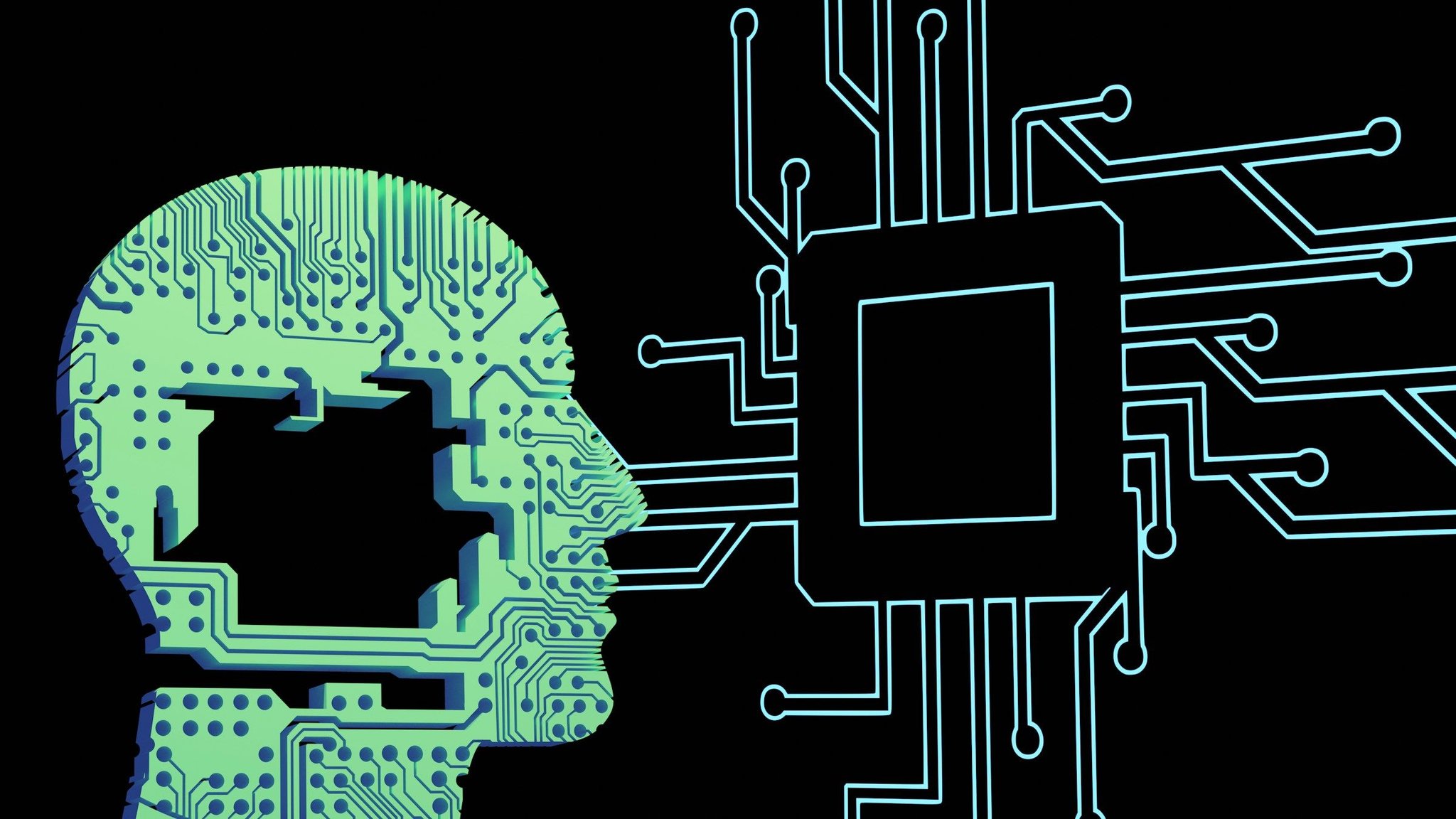


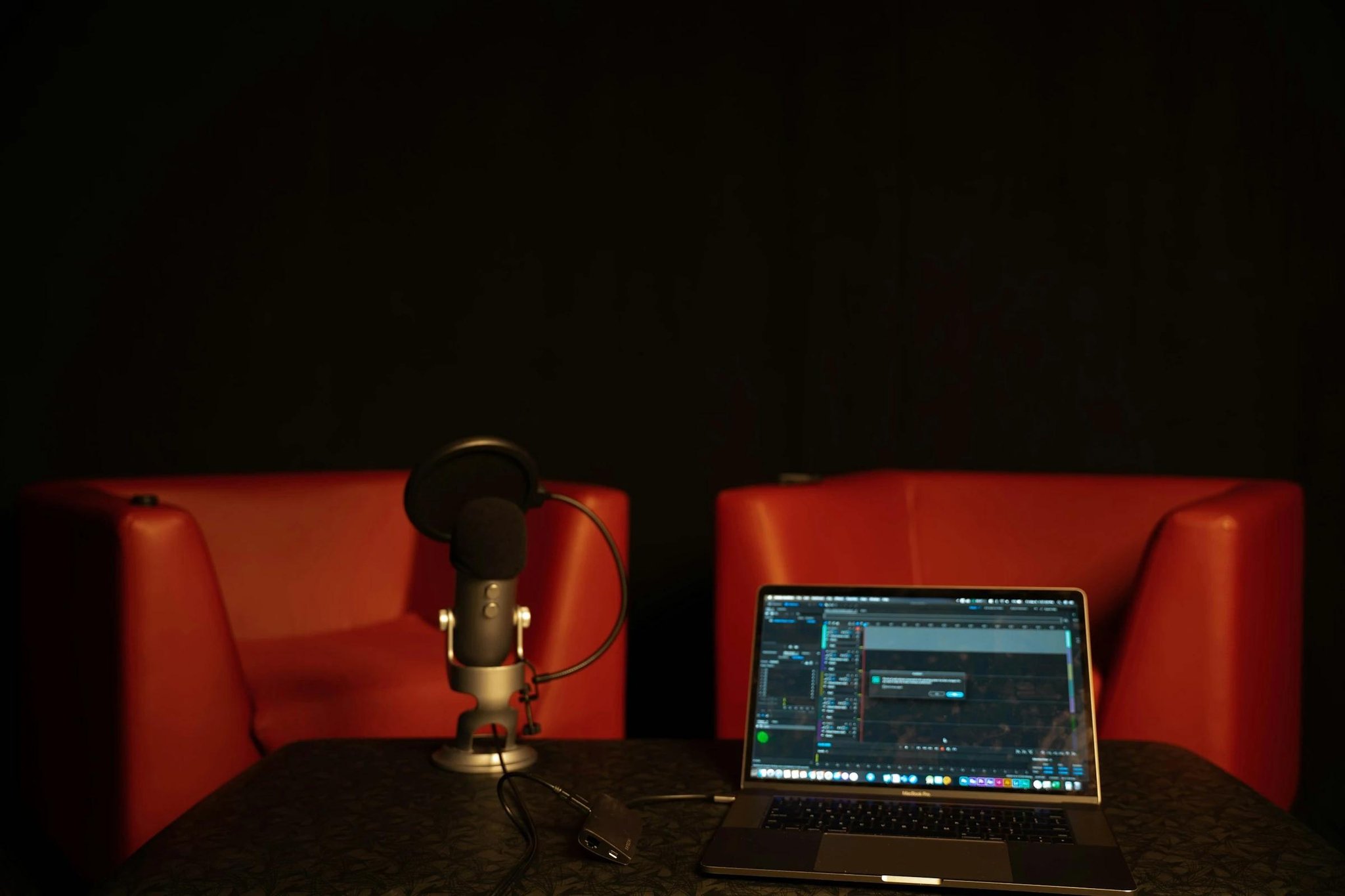
What is AI Music? Discover how artificial intelligence is transforming how music is created, composed, and experienced today.
Consider you're at a party, and someone puts on the latest song from your favorite artist. But when you check the track listing, you see that the artist is some computer program. You may be freaked out or at least puzzled. Something similar happens when making AI music covers.
As you record your version of an AI-generated song, you might wonder, What is AI music, anyway? How does it work? How to Make AI Music Covers? Is this even legal? In this guide, we’ll cover what AI music is, how it’s created, and why it matters. Of course, we’ll also show you how to make AI music covers.
And with SendFame's AI content generator, you can choose your customized music cover quickly.
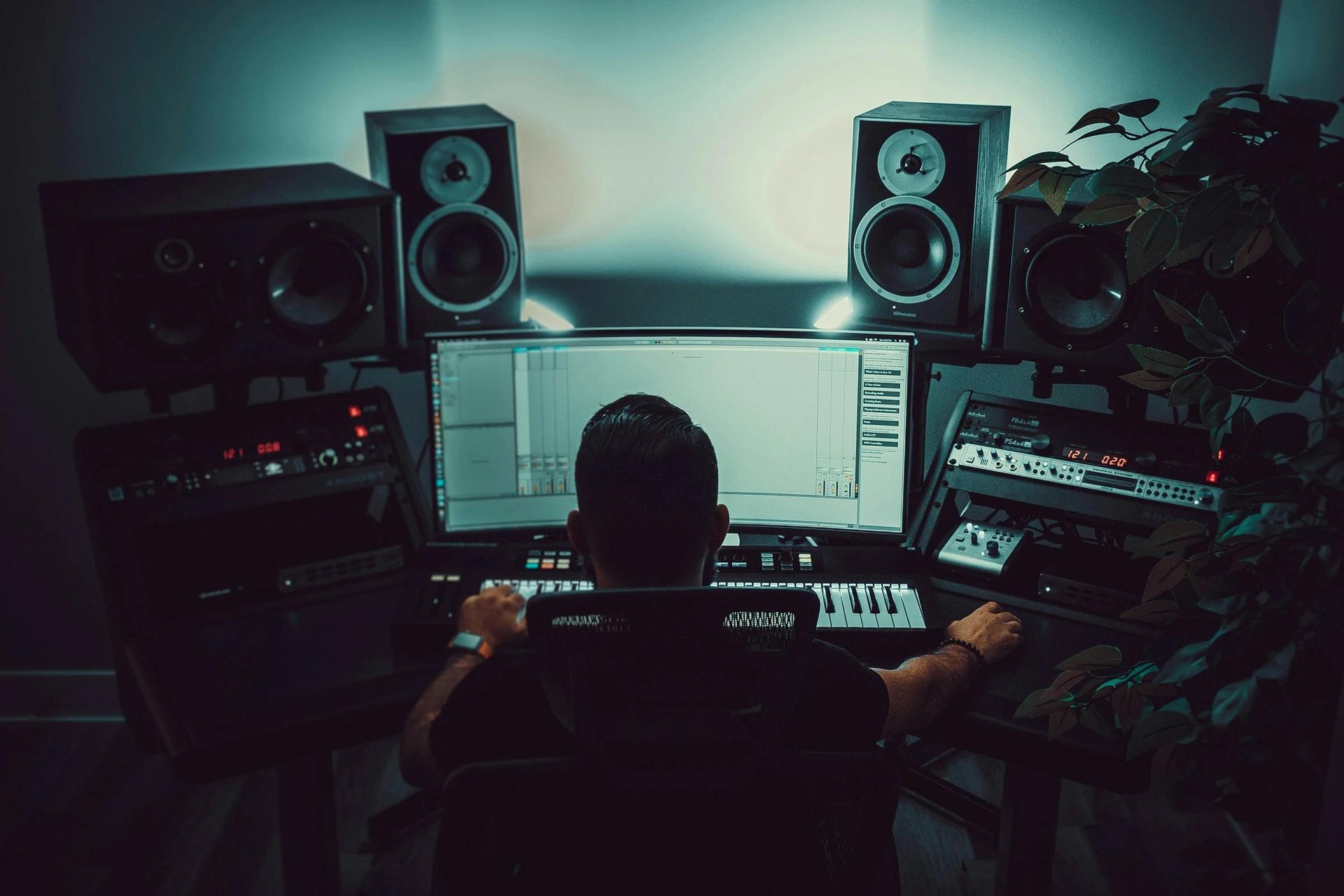
AI music covers any musical work-whether it’s a composition, production, or live performance is created or substantially enhanced through artificial intelligence technologies. Unlike conventional music creation, which depends entirely on human creativity, intuition, and technical skill, AI music integrates sophisticated computational models such as machine learning algorithms and neural networks.
These systems analyze extensive datasets of existing music, identify intricate patterns in melody, harmony, rhythm, and structure, and then use this knowledge to generate fresh musical content. This capability allows AI to compose pieces across various genres, from classical masterpieces to contemporary pop tunes, adapting to diverse stylistic nuances.
The role of AI in the music industry is diverse and expanding. AI can serve as a virtual composer, crafting original songs tailored to specific emotional tones and genres and even mimicking the unique style of individual artists. Beyond composition, AI tools are transforming music production by automating complex tasks such as mixing tracks, mastering audio quality, and designing sounds.
These tools provide instant feedback and streamline workflows, significantly reducing the time and effort required. Furthermore, AI is increasingly integrated into live performances, where it can generate real-time accompaniment, create dynamic backing tracks, or interact with musicians on stage, enhancing the concert experience.
The influence of AI on music creation, production, and consumption is growing at an unprecedented pace. AI opens new creative possibilities for creators by enabling experimentation with innovative sounds and automating routine tasks, allowing artists to focus more on artistic expression.
For listeners, AI powers personalized music experiences through advanced recommendation algorithms and curated playlists, reshaping how audiences discover and engage with music. Recent surveys indicate that approximately 60% of musicians now incorporate AI tools for tasks such as mastering tracks, composing melodies, or designing album artwork.
Additionally, 74% of internet users have utilized AI-driven platforms to explore new music. Impressively, AI-generated tracks have reached a level of sophistication where 82% of listeners cannot reliably distinguish them from human-made music, underscoring the technology’s maturity.
Landmark industry developments highlight the widespread adoption of AI music. A notable example is The Beatles’ posthumous release of “Now and Then,” which utilized AI to isolate John Lennon’s vocals from archival demos and complete the song with contributions from the surviving band members. This pioneering project illustrates how AI can breathe new life into historic recordings, offering fresh creative opportunities while preserving musical heritage.
From a market perspective, AI music is experiencing explosive growth. The industry’s valuation is expected to reach $6.2 billion in 2025 and could skyrocket to $38.7 billion by 2033, reflecting an annual growth rate exceeding 25%. Within this, the generative AI branch focused on creating new content is projected to be nearly a $3 billion market by 2025 alone.
This rapid expansion is transforming music production and consumption and driving a 17.2% increase in overall industry revenue. As AI reshapes the landscape of music in fundamental ways, these trends present both exciting opportunities and new challenges for musicians, producers, and listeners.
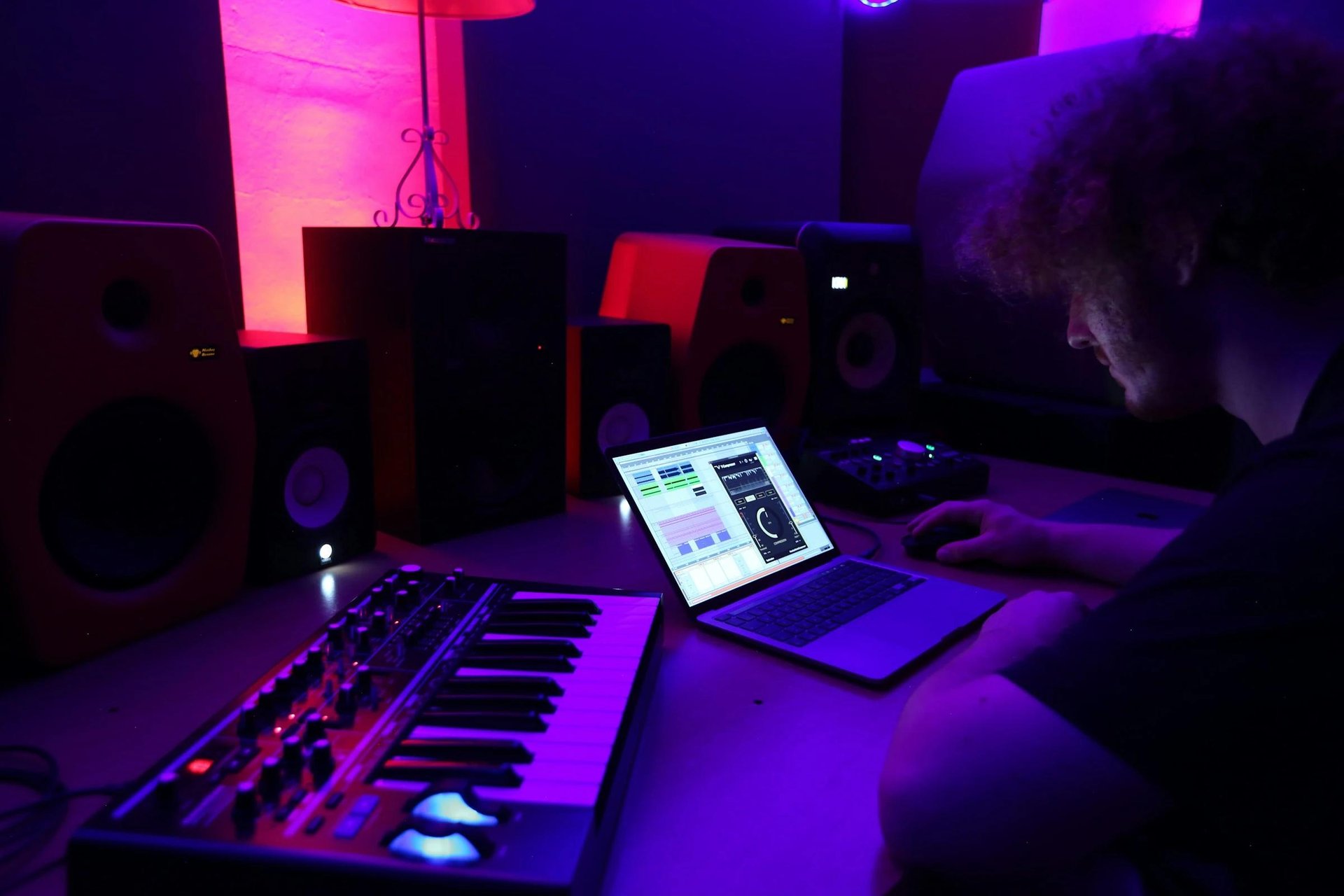
AI music creation relies on sophisticated algorithms that analyze, learn from, and generate music by mimicking human creativity through computational processes. At its core, AI music generation involves three fundamental steps: data analysis, pattern recognition, and music generation.
At the core of AI-driven music creation is analyzing vast amounts of musical data and recognizing patterns. AI systems begin by processing extensive collections of songs that cover a broad spectrum of genres, periods, and stylistic variations. This rich and diverse dataset provides the foundation for AI to learn the fundamental components of music.
Through this comprehensive examination, machine learning algorithms detect recurring elements such as chord progressions, melodic shapes, rhythmic sequences, and harmonic relationships. This enables the AI to uncover the underlying principles that govern how music is structured and performed.
Once the data is ingested, AI models focus on identifying statistical connections between different musical elements. These connections reveal how specific notes or chords typically follow one another, how rhythms complement melodies, and how harmonies evolve throughout a composition. Crucially, AI considers the temporal dimension—how musical events unfold over time—since the flow and progression of music are essential to its emotional and aesthetic impact.
Neural network architectures like Recurrent Neural Networks (RNNs) and their enhanced variants, Long Short-Term Memory (LSTM) networks, are especially adept at capturing these long-term dependencies, allowing AI to generate coherent and contextually meaningful music.
This ability to analyze sequences and patterns allows AI to go beyond simple replication and create original compositions that maintain musical logic and emotional resonance. By learning from various musical styles, AI can blend influences or generate new variations that feel authentic and engaging. The system’s understanding of temporal relationships ensures that its music flows naturally, with melodies and harmonies that develop in a way listeners find satisfying and familiar.
Furthermore, AI’s pattern recognition capabilities enable it to adapt to different musical genres and user preferences. Whether the goal is to compose classical symphonies, jazz improvisations, electronic beats, or pop tunes, AI models can tailor their output to fit specific stylistic requirements. This versatility makes AI a powerful tool for musicians, producers, and hobbyists alike, providing inspiration and assistance in crafting music that aligns with diverse tastes and creative visions.
After extensive training on large datasets of musical compositions, AI models can independently create new pieces of music by forecasting what note or chord should come next in a sequence. This prediction is based on the AI's learned patterns and structures during training, allowing it to compose melodies and harmonies that feel natural and musically coherent.
The process is somewhat similar to how a skilled musician might anticipate the following phrase in a song, but AI achieves this through complex mathematical modeling rather than intuition. By continuously predicting and selecting subsequent musical elements, the AI constructs complete compositions ranging from simple melodies to intricate multi-layered arrangements.
The generation of music by AI is supported by various specialized architectures, each designed to fulfill distinct creative roles. These architectures differ in how they represent and produce music, enabling a broad spectrum of musical outputs. The versatility of AI music generation means it can cater to different needs, whether for composing background scores, creating experimental sounds, or assisting human artists in their creative workflows.
Symbolic music generation refers to the creation of music in a format where every note, its pitch, duration, and timing are explicitly encoded, such as MIDI files. This method allows AI to work with a structured representation of music, making it easier to manipulate and understand musical elements.
Advanced models like Music Transformer and MuseNet excel in this domain by generating compositions that involve multiple instruments and exhibit stylistic consistency over long passages. These models are capable of capturing the essence of various genres and even imitating the style of specific composers, producing music that feels both original and contextually appropriate.
The advantage of symbolic music generation lies in its precision and flexibility. Because the music is symbolic, it can be easily edited, arranged, or adapted for different purposes. This makes it particularly valuable for composers and producers who want to experiment with AI-generated ideas and refine them further. Moreover, symbolic generation supports complex musical structures, such as counterpoint and layered harmonies, allowing AI to create rich, sophisticated pieces that maintain coherence.
In contrast to symbolic generation, audio-based music generation focuses on producing raw sound waves, creating music in its actual audio form rather than a symbolic representation. This approach aims to generate high-quality, realistic sound textures that can be directly played without additional processing.
Technologies like DeepMind’s WaveNet utilize autoregressive sampling techniques to synthesize audio waveforms that closely mimic the nuances of human performances, including subtle variations in tone and dynamics. This results in natural and expressive music, bridging the gap between digital synthesis and live instrumentation.
Generative Adversarial Networks (GANs) represent another powerful method in audio-based music generation. GANs consist of two neural networks working in tandem: one generates new audio samples, while the other evaluates their authenticity and quality. Through this adversarial process, the generator gradually improves its output, producing innovative and often unexpected sounds.
This iterative refinement enables GANs to create unique musical textures and experimental soundscapes that push the boundaries of traditional music creation. Audio-based generation is particularly valuable for sound design, electronic music, and applications where the timbral quality of the sound is paramount.
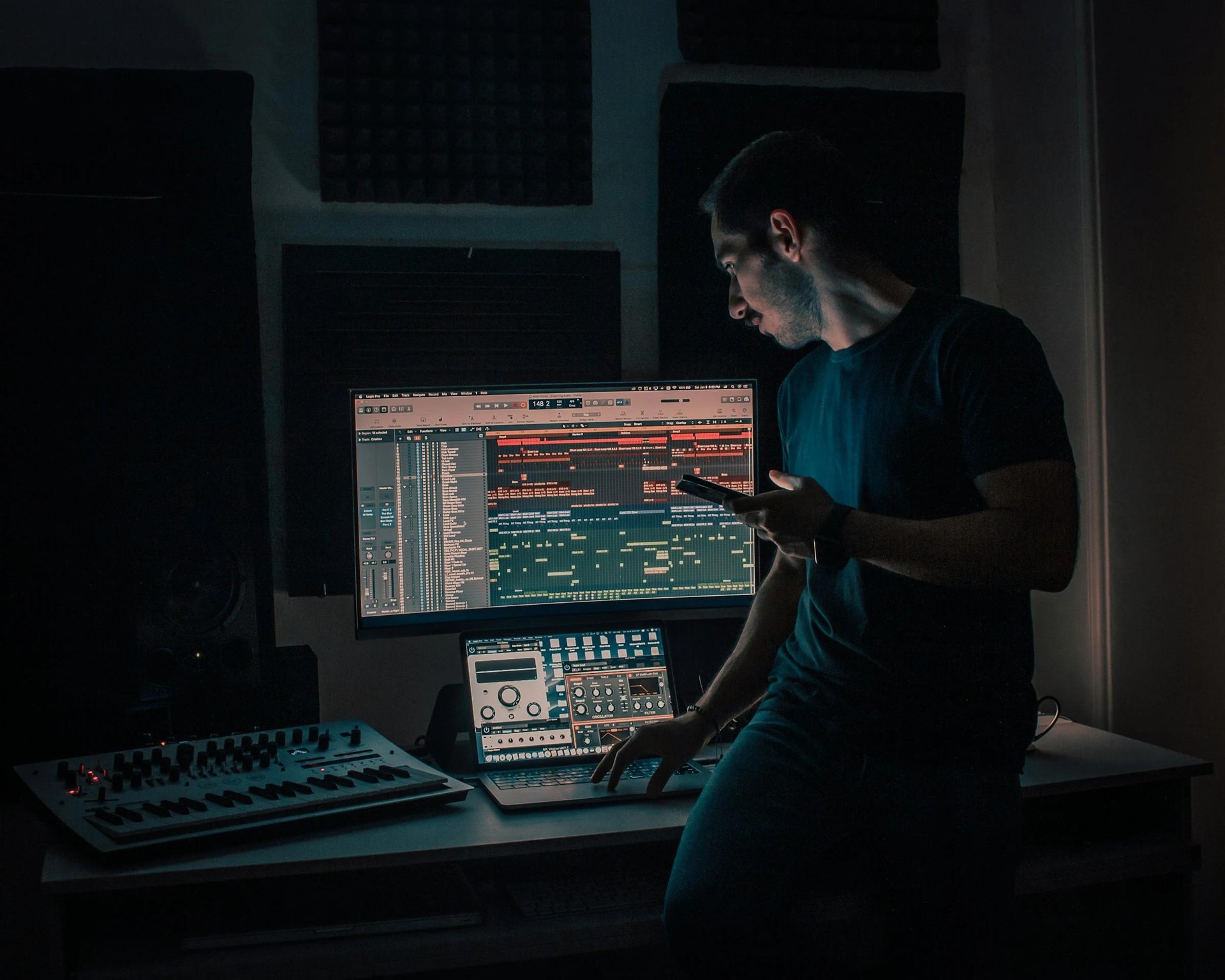
Mastering and AI-powered production assistants have transformed the audio engineering process by automating complex tasks that traditionally required expert knowledge. These tools analyze audio tracks with precision, applying adjustments such as equalization, compression, and spatial effects to enhance overall sound quality.
By automating these processes, AI mastering tools help artists achieve polished, professional-grade results without requiring expensive studio time or technical expertise. This democratization of high-quality production enables emerging musicians and producers to compete on a more level playing field.
In addition to improving efficiency, AI mastering assistants speed up the workflow, allowing creators to focus more on the artistic aspects of music-making rather than technical minutiae. Many of these tools provide real-time feedback and intuitive controls, making it easier for users to fine-tune their tracks according to their vision.
As a result, AI-driven mastering has become an indispensable part of modern music production, allowing artists to deliver high-quality releases quickly and cost-effectively.
Advanced AI systems have also made significant strides in integrating lyrics and melodies, transforming written words into singable, emotionally resonant music. These tools utilize sophisticated neural networks that model pitch, rhythm, and stylistic nuances to produce vocal lines that align perfectly with the lyrical content.
This technology ensures that the emotional tone of the lyrics is reflected in the melody, creating a natural and expressive musical experience. By automating this complex process, AI helps songwriters overcome creative blocks and experiment with new melodic ideas that complement their words.
This integration of lyrics and melody accelerates songwriting and opens up new creative avenues for artists who may struggle with one aspect of the craft. For example, a lyricist can quickly hear their words brought to life with fitting melodies, while a composer can generate vocal lines that match a given lyrical theme.
This synergy enhances collaboration between different creative roles and streamlines the songwriting process, making music creation more accessible and dynamic.
AI’s role in live music performance is becoming increasingly sophisticated, offering tools that can accompany musicians in real time or even improvise alongside them. These live performance enhancers analyze a performer’s style, tempo, and harmonic preferences to generate backing tracks or complementary instrumental parts dynamically.
This interactive collaboration allows musicians to explore new creative directions during concerts or jam sessions, enriching the live experience for both artists and audiences. By adapting instantly to changes in performance, AI tools ensure smooth integration without disrupting the flow of music.
Such technology also lowers barriers for solo performers or small ensembles who want to create fuller, more complex soundscapes without additional musicians. The ability of AI to respond to live input and improvise intelligently creates novel performance possibilities, blending human spontaneity with machine precision.
As these tools continue to evolve, they promise to redefine how live music is created and experienced, opening up exciting new frontiers for performers worldwide.
AI music generators and composers have transformed the creative landscape by enabling the production of original songs either from scratch or guided by user input. These tools leverage complex machine learning models to understand musical patterns, harmonies, and lyrical structures, allowing them to craft melodies and lyrics that feel coherent and engaging.
For example, some AI systems use advanced sequence modeling techniques to generate complete songs, including instrumental and vocal elements, tailored to specific genres or moods. This capability opens up new creative avenues for musicians, producers, and content creators who want to experiment with fresh ideas or overcome creative blocks.
Platforms like SendFame fit naturally within this category by allowing users to generate custom songs based on their text inputs. By converting themes, lyrics, or concepts into entirely produced tracks with vocals and beats, SendFame provides a streamlined way to create original music quickly.
This makes it an excellent resource for artists and creators looking to produce rap songs or other genres without extensive musical training or production skills. While it focuses primarily on music generation rather than detailed composition tools, SendFame’s approach allows users to bring their musical ideas to life efficiently.
Release your creativity with SendFame! Create stunning AI celebrity videos, music tracks, and images in seconds that will wow your audience. Generate hyper-realistic videos of your favorite celebrities delivering personalized messages, craft original songs with professional-quality vocals, and transform static images into dynamic videos—all with just a few clicks. No technical skills required—just your imagination! Join 130,000+ users already creating viral-worthy content. Try SendFame today and turn your creative ideas into reality instantly.
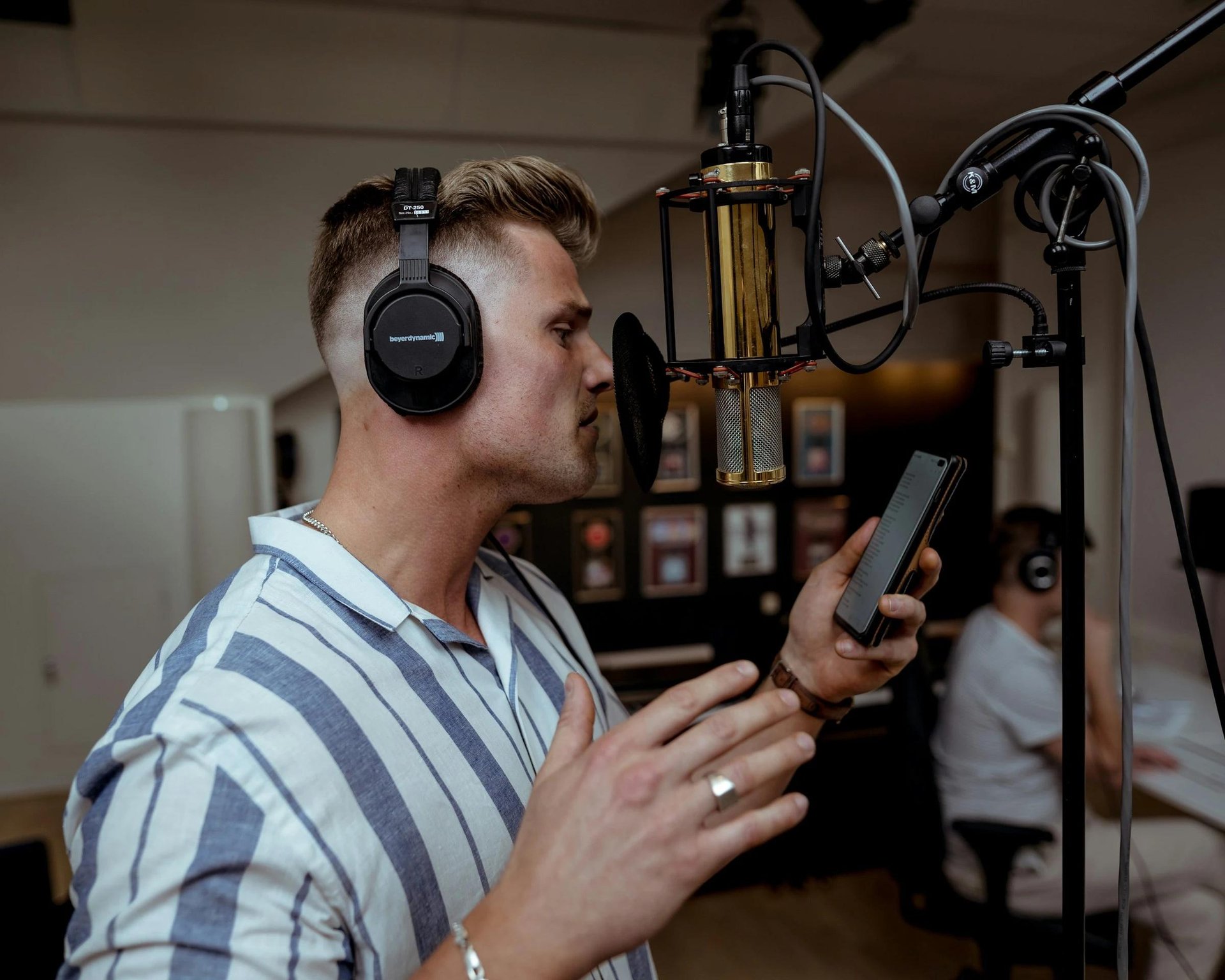
The AI music market is witnessing remarkable surges marked by rapid expansion and robust investor confidence. From a valuation of around $3.9 billion in 2023, the market is forecasted to climb to $6.2 billion by 2025, with projections reaching an impressive $38.7 billion by 2033. This trajectory reflects a compound annual growth rate of approximately 25.8% between 2024 and 2033, signaling strong momentum in AI-driven music technologies.
The generative AI music segment is a significant contributor to this growth, which is expected to increase from $2.38 billion in 2024 to $2.92 billion in 2025, eventually hitting an estimated $18.47 billion by 2034. These figures underscore the growing reliance on AI tools among musicians and producers, with around 60% of artists already incorporating AI for tasks such as mastering, composing, and even creating visual artwork to complement their music projects.
Several key factors propel this rapid market expansion. First, the increasing demand for personalized and algorithmically curated music experiences reshapes how audiences discover and consume music, driving streaming platforms and content creators to adopt AI solutions. Additionally, advancements in machine learning and AI algorithms enable more sophisticated music generation that closely mimics human creativity, thus broadening AI-produced tracks' appeal and commercial viability.
AI’s ability to streamline workflows—from composition to production—allows artists to experiment with new sounds and accelerate their creative processes. Moreover, AI-generated music is expected to contribute a 17.2% boost to the overall music industry revenue by 2025, highlighting its substantial economic impact. As the technology continues to evolve, AI is not only democratizing music production by making it accessible to independent artists and smaller studios but also transforming the entire music ecosystem, from creation to monetization.
AI technologies fundamentally transform how artists and producers approach music creation, ushering in a new era of innovation and efficiency. By leveraging the potential of machine learning and vast music databases, AI systems can independently compose melodies, harmonies, and rhythms, significantly accelerating the production timeline.
This capability allows musicians to experiment with fresh, unconventional sounds and ideas that might have been difficult or time-consuming to conceive manually. Beyond composition, AI automates many technical and repetitive aspects of music production, such as mixing and mastering, which traditionally require extensive expertise and time. This automation liberates artists from routine tasks, enabling them to focus more deeply on their craft's creative and expressive elements.
In addition to streamlining production, AI tools open new avenues for artistic discovery and collaboration. These systems can generate unexpected musical motifs and arrangements, sparking inspiration and offering artists novel material to refine or incorporate into their projects. This element of serendipity enhances creative possibilities, pushing the boundaries of traditional music-making.
Furthermore, AI’s influence extends beyond sound creation to other facets of the music industry, including generating promotional assets like album artwork and marketing content. By integrating AI throughout the production pipeline, artists and producers can achieve a more cohesive and efficient workflow, reducing the time from concept to release while expanding their creative toolkit. This reshaping of workflows boosts productivity and fosters a more dynamic and experimental music ecosystem.
AI is rapidly reshaping revenue streams within the music industry by unlocking new financial opportunities while simultaneously challenging traditional income frameworks. The anticipated 17.2% surge in industry revenue by 2025, mainly driven by AI-generated music, highlights the growing acceptance and monetization of AI-assisted content among consumers and industry stakeholders alike.
Streaming platforms, which now dominate music consumption globally, increasingly depend on AI-powered algorithms to curate personalized playlists and recommend tracks tailored to individual listener preferences. This algorithmic influence significantly impacts which songs achieve higher visibility and, consequently, greater revenue generation. As AI tools become more sophisticated, they facilitate music discovery and enhance listener engagement, thereby expanding the commercial potential for both AI-generated and human-created music.
However, this evolution brings complex challenges, particularly concerning the fair compensation of human artists. The rise of AI-generated music raises concerns about displacing traditional creative roles and potentially eroding musicians' earnings. Industry analyses warn that without equitable regulatory frameworks, musicians could face up to a 27% decline in revenue by 2028 as AI content proliferates.
This underscores the urgent need for policies that balance technological innovation with protecting creators’ rights and income. The music industry must navigate these ethical and financial complexities to ensure that AI complements human artistry rather than replaces it. Achieving this balance will be crucial to sustaining a thriving, diverse music ecosystem where AI and human creativity coexist and contribute to economic growth.
AI transforms how listeners discover and interact with music, fundamentally altering the user experience across digital platforms. Today, about 74% of internet users utilize AI-powered tools to explore new music, highlighting the technology’s integral role in shaping listening habits. More than half of the most-streamed songs owe their popularity to AI-driven recommendation algorithms, which analyze vast amounts of data to predict and suggest tracks that align with individual preferences.
This widespread influence underscores AI’s ability to curate music in a manner that resonates deeply with diverse audiences. Intriguingly, 82% of listeners cannot differentiate between AI-generated compositions and those created by human artists, a testament to the increasing sophistication of AI in replicating the nuances of human creativity and emotional expression.
Beyond discovery, AI enhances the listening experience through personalized recommendations that adapt dynamically to users’ evolving tastes, resulting in higher engagement and satisfaction. These AI systems craft uniquely tailored playlists, ensuring that listeners are consistently introduced to music that aligns with their moods and preferences. Additionally, real-time music enhancements and AI-driven remixing techniques add layers of variety and freshness to the content, expanding the range of musical styles and interpretations available to audiences.
This not only broadens accessibility but also fosters a more immersive and interactive relationship between listeners and music. As AI advances, it promises to deepen the connection between artists and fans by delivering highly customized and innovative auditory experiences.
Artificial intelligence (AI) rapidly reshapes the music industry, influencing how music is created, distributed, and consumed. By 2025, AI is expected to become deeply integrated into every facet of music production and experience, offering transformative opportunities for artists, brands, and fans.
Generative AI and Personalized Soundtracks AI-driven generative music tools have evolved remarkably. They have advanced far beyond basic melody creation to become sophisticated collaborators who deeply understand an artist’s unique style and preferences. These cutting-edge systems can autonomously mix tracks, propose inventive modifications, and even compose pieces tailored to particular moods or creative briefs.
For instance, platforms like SendFame offer accessible AI tools for personalized, user-driven music and video creation, primarily for entertainment and social use. This enables artists and creators to experiment with AI-generated lyrics, vocals, beats, and even music videos, which can inspire fresh ideas and creative exploration. Consequently, AI democratizes music production and expands the creative toolkit available to musicians, whether seasoned professionals or emerging talents exploring new sonic territories.
In parallel, personalized soundtracks powered by AI are becoming increasingly prevalent, transforming how listeners engage with music. These adaptive soundtracks dynamically adjust to individual preferences, environments, or even biometric data, creating immersive and highly customized listening experiences. For example, AI can tailor playlists to match a listener’s mood, activity, or context, offering a level of personalization that traditional curation methods cannot achieve.
This trend is supported by platforms that allow users to train AI models on their music, generating compositions that reflect their distinct tastes and styles. Beyond entertainment, generative AI also transforms music education and collaboration by providing virtual tutors, real-time feedback, and enabling remote co-creation across cultural and linguistic boundaries. This fosters a more inclusive and globally connected music ecosystem where technology amplifies creativity. As AI advances, it will redefine music creation and deepen the relationship between artists and audiences through personalized, interactive soundscapes.
AI-powered music curation and discovery fundamentally transform how listeners find and interact with music on streaming platforms. Today, an overwhelming 74% of internet users depend on AI algorithms to discover or share music, illustrating the technology’s pervasive role in shaping musical tastes and trends. These algorithms analyze vast amounts of data, including listening habits, user preferences, and contextual factors, to deliver hyper-personalized playlists that resonate with individual moods and activities.
More than half of the top-streamed songs owe their popularity to algorithmic recommendations, highlighting AI’s influence in boosting certain tracks and artists. As AI evolves, these systems will become even more sophisticated, offering interactive and adaptive listening experiences that respond in real-time to changes in a user’s environment or emotional state, thereby deepening engagement and satisfaction.
The impact of AI on music curation extends beyond just personalized playlists; it is also democratizing music discovery and broadening the horizons for both artists and fans. By leveraging machine learning and natural language processing, AI can identify emerging trends and niche genres that might otherwise remain under the radar, helping lesser-known artists gain visibility. This shift benefits the entire music ecosystem by fostering diversity and innovation.
Furthermore, AI-driven platforms enable fans to explore music in novel ways, such as through mood-based radio stations or context-aware soundtracks that adjust to activities like working out or relaxing. The continuous refinement of these algorithms promises a future where music discovery is smooth, intuitive, and deeply personalized, allowing listeners to connect with music that truly reflects their unique tastes and lifestyles. This evolution enhances user experience and opens new avenues for monetization and creative collaboration within the music industry.
The surge in virtual and augmented reality (VR/AR) concerts marks a pivotal shift in the music industry, driven by technological advances and the global pandemic’s acceleration of digital experiences. Specific platforms have demonstrated the immense appeal of immersive, interactive live shows, drawing millions of viewers worldwide and proving that virtual concerts can transcend the limitations of physical venues.
This trend is supported by the rapid growth of the VR market, which is projected to expand from $16.7 billion in 2024 to over $55 billion by 2029, fueled mainly by entertainment and gaming sectors that overlap with music experiences. Consumers, especially younger generations, show strong enthusiasm for virtual concerts, with nearly 40% of Gen Z and millennials expressing high interest in attending these events using VR technology. Advances in headset comfort, image resolution, and spatial audio further enhance immersion, making virtual concerts more engaging and accessible than ever before.
In 2025 and beyond, VR and AR concerts are poised to become mainstream components of the music ecosystem, blending AI-generated music with richly detailed 3D environments to offer novel forms of fan interaction. The integration of AI will enable dynamic soundscapes that adapt in real-time to audience reactions, creating personalized concert experiences that were previously unimaginable. This evolution is part of a broader immersive virtual reality market expected to grow at a compound annual growth rate (CAGR) of around 27%, reaching a nearly $383 billion valuation by 2033.
Beyond entertainment, these technologies drive innovation in training, healthcare, and retail, underscoring their broad societal impact. For artists and brands, VR/AR concerts open new revenue streams and marketing avenues, while fans gain unprecedented access to live performances regardless of geographic constraints. As hardware becomes lighter, more affordable, and easier to use, immersive virtual concerts will redefine how music is experienced, making them a central pillar of the future music landscape.
Artificial intelligence is rapidly becoming an essential collaborator in the music creation, transforming how artists compose and produce their work. Rather than replacing human creativity, AI tools increasingly handle technical and repetitive tasks such as mixing, mastering, and sound balancing, freeing artists to focus on innovation and expression.
According to McKinsey, AI is expected to contribute approximately 20% of all music production in 2025, underscoring its growing influence in composition and sound engineering. These AI-driven systems can analyze vast datasets of musical styles and structures, offering artists novel suggestions and creative directions that might not have emerged through traditional methods. Musicians who adopt AI as an innovative partner rather than viewing it as competition will likely gain a competitive edge, leveraging technology to expand their artistic horizons and streamline production workflows.
Beyond efficiency, AI’s role in music creation fosters new genres and hybrid styles by blending diverse influences and experimenting with sound in unprecedented ways. AI-generated compositions can serve as a foundation or inspiration for artists, accelerating the creative process and enabling rapid prototyping of musical ideas. This democratization of music production tools allows emerging artists with limited resources to produce high-quality work, leveling the playing field in an increasingly competitive industry.
As AI continues to evolve, it will augment human creativity and challenge traditional notions of authorship and originality, prompting artists and industry stakeholders to rethink intellectual property and collaboration models within the music ecosystem.
AI is set to transform music distribution by making the process more efficient, targeted, and transparent. AI can optimize release schedules through advanced data analytics and machine learning by predicting the best times to launch new music based on audience behavior and market trends. This precision targeting allows artists and labels to maximize reach and engagement, tailoring marketing campaigns to specific listener segments with personalized messaging and content.
Additionally, integrating blockchain technology and non-fungible tokens (NFTs) creates innovative pathways for artists to monetize their work, ensuring clear provenance and fair compensation in a landscape often plagued by piracy and revenue leakage. These technologies give artists greater control over their music rights and enable direct-to-fan sales, bypassing traditional intermediaries.
Moreover, AI’s capacity to generate custom tracks for brands, advertisers, and content creators opens new revenue streams beyond conventional music sales and streaming royalties. Brands increasingly seek unique, AI-crafted soundtracks to enhance marketing campaigns, social media content, and immersive experiences, creating demand for bespoke compositions tailored to specific audiences and contexts.
This shift not only diversifies income opportunities for musicians but also fosters closer collaboration between the music industry and other sectors such as advertising, gaming, and entertainment. As AI continues to refine distribution strategies and monetization models, it will allow artists to reach broader audiences while maintaining greater artistic and financial autonomy.
AI’s ability to deliver highly personalized and adaptive soundscapes profoundly reshaped the way listeners experience music. AI-powered platforms can curate playlists that evolve in real time, responding to a listener’s mood, activity, or even biometric data like heart rate and movement. This dynamic interaction transforms passive listening into an immersive experience, where the music adapts fluidly to the listener’s environment and emotional state.
Personalization enhances user engagement and fosters deeper emotional connections between fans and artists. As these technologies mature, we can expect music consumption to become increasingly interactive and context-aware, blurring the lines between creator and audience.
Interestingly, the distinction between human- and AI-created music is becoming less clear to listeners, with studies showing that approximately 82% of people cannot reliably differentiate between the two. This shift challenges traditional perceptions of authenticity and raises essential questions about the value and identity of music in the digital age.
As AI-generated compositions gain acceptance, the music industry must reconsider how it defines creativity and originality, potentially embracing hybrid models where human intuition and machine intelligence coexist. This evolution promises consumers a more prosperous and diverse musical landscape, where access to tailored content and innovative experiences will redefine how music is enjoyed and appreciated worldwide.
Artists today have the opportunity to equip artificial intelligence as a powerful ally in their creative process. By integrating AI tools into their workflow, musicians can significantly boost their creative output, allowing them to experiment with new sounds and ideas that might have been difficult or time-consuming to develop manually. These technologies can streamline various stages of music production—from composing melodies to mixing tracks—thereby reducing the time required to complete a piece.
Significantly, AI lowers the barrier to entry by enabling artists without deep technical skills to explore and innovate across diverse musical genres and styles. This democratization allows emerging talents to showcase their artistry alongside established acts, leveling the competitive landscape and fostering a more inclusive musical ecosystem.
Brands increasingly turn to AI-generated music as a strategic tool to craft highly personalized and engaging advertising experiences. By leveraging AI, companies can create soundtracks and jingles that are finely tuned to the preferences and emotions of their target audiences, enhancing brand recall and emotional connection.
Moreover, AI enables the development of immersive marketing campaigns where music adapts dynamically to user interactions, making advertisements more memorable and impactful. The convergence of AI with blockchain technologies such as NFTs opens up innovative avenues for brands to engage consumers, offering exclusive digital collectibles and unique sound assets that can be monetized. This fusion enriches brand storytelling, creates new revenue streams, and deepens customer loyalty through interactive and exclusive content.
Artificial intelligence promises a transformative evolution in how music fans and enthusiasts experience and interact with music. AI-powered platforms can curate personalized playlists that evolve in real time, adapting to the listener’s mood, preferences, and activities, thus providing a uniquely tailored soundtrack. Beyond passive listening, fans can participate in virtual concerts and interactive events that leverage AI to create immersive environments, offering unprecedented access to artists and performances regardless of geographic limitations.
These technologies also facilitate discovery by recommending diverse and emerging artists aligned with individual tastes, broadening listeners’ musical horizons. As a result, AI enriches the enjoyment of music and fosters a deeper, more engaging connection between fans and the music community.
The AI music market is experiencing explosive growth, with projections estimating its value at approximately $6.2 billion by the end of 2025. This rapid expansion is driven by the increasing adoption of AI technologies across music creation, production, and distribution, enabling new forms of artistic expression and efficiency.
Generative AI, a key segment within this market, is expected to be worth nearly $2.92 billion this year alone, reflecting its rising prominence as a tool for composing and producing music autonomously or in collaboration with human artists.
Over the next decade, the market is forecasted to surge dramatically, reaching nearly $39 billion by 2033, fueled by continuous technological advancements and growing demand for innovative music solutions in entertainment, advertising, and gaming sectors.
Despite the promising economic outlook, this rapid growth presents significant challenges for the industry. Issues surrounding copyright and intellectual property rights are increasingly complex as AI-generated music blurs the lines between human creativity and machine output. Questions about authenticity and the fair compensation of original artists have sparked debates, highlighting the need for updated legal frameworks and ethical guidelines.
As AI reshapes music creation and consumption, stakeholders must balance innovation with protecting creators' rights to ensure sustainable growth. The evolving landscape calls for collaborative efforts among technologists, musicians, policymakers, and industry leaders to equip AI’s transformative potential while safeguarding artistic integrity and equitable revenue distribution.
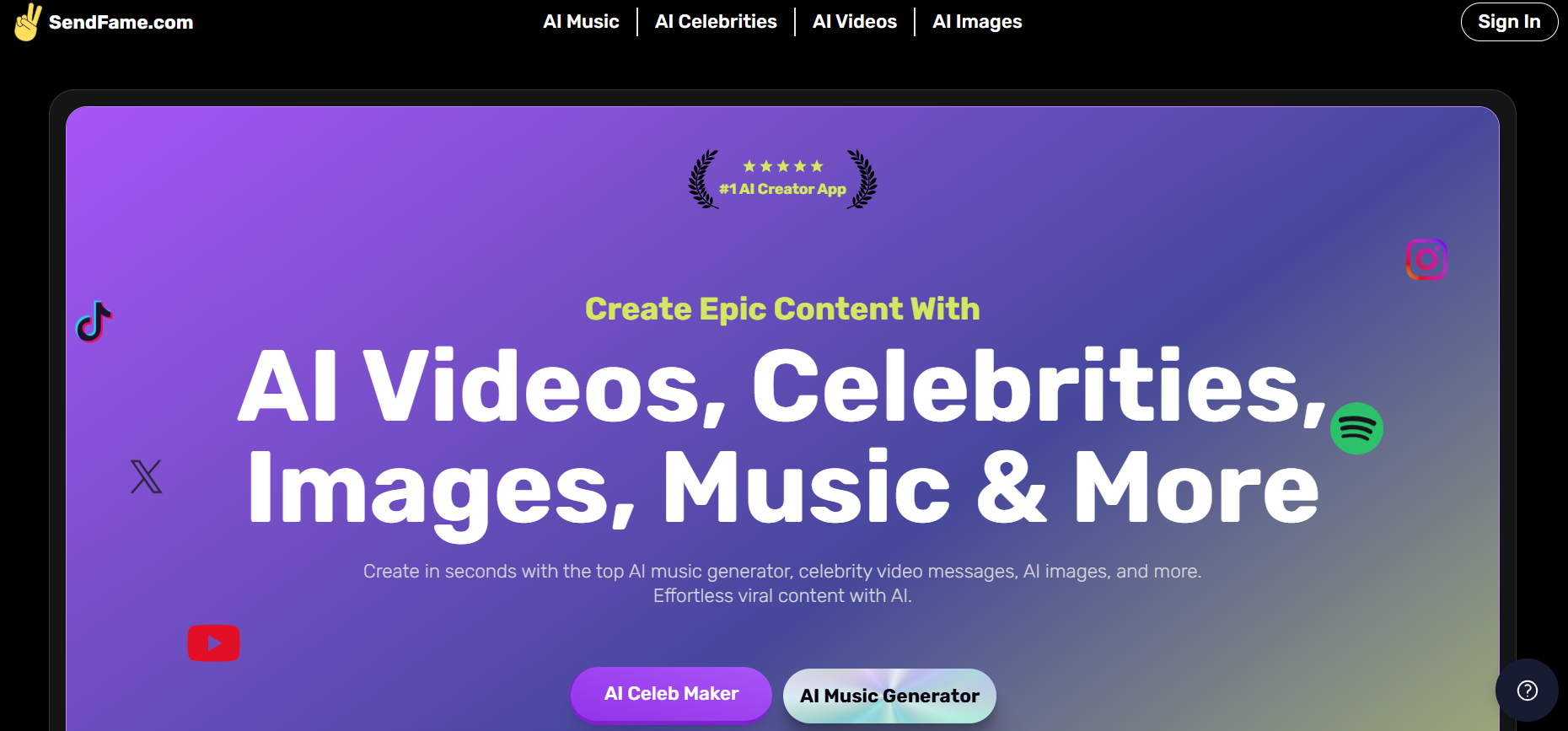
SendFame strikes a balance between cutting-edge artificial intelligence tools and practical capabilities. Users can create personalized videos featuring generated celebrity voices while also generating custom music tracks with AI lyrics and vocals.
The platform doesn’t claim to produce professional studio-quality music independently. Still, its AI Rap Generator and music tools provide a convenient way for users, especially those without extensive musical training, to generate original songs from simple text prompts. The innovation here lies in combining AI-generated vocals, lyrics, beats, and music videos into a single workflow, which is relatively rare among AI music tools.
However, SendFame is best suited for personal and entertainment purposes rather than commercial music production, as its licensing and feature set reflect this focus. Its user-friendly interface and variety of features make it accessible to a broad audience, including content creators looking to experiment with AI-driven music and video creation without needing advanced technical skills.
SendFame emphasizes an ethical approach by positioning its celebrity voice tools for parody and personal use only. The platform does not hold commercial licenses for its celebrity likenesses and advises users against employing generated content for commercial purposes. This transparency helps maintain respect for original artists and public figures, avoiding potential legal or ethical issues that can arise with AI-generated impersonations.
Additionally, SendFame supports creators by providing AI tools that assist rather than replace human artistry. Its AI-generated music and video content can serve as inspiration or a starting point for creators to build upon, rather than a finished product intended to compete with professional music production. This approach aligns with the broader industry trend of using AI as a creative aid that expands possibilities while respecting intellectual property rights and artistic integrity.
In the current AI music space, there is a growing demand for tools that simplify content creation and enable rapid generation of multimedia outputs. SendFame fits this trend by offering integrated AI features that combine music, vocals, lyrics, and video generation in one platform. Its support for multiple languages and various music genres enhances its appeal to a diverse user base, reflecting the increasing globalization of digital content creation.
While SendFame’s tools are not designed to replace professional music production software or services, they allow creators, especially amateurs and social media users, to quickly produce unique and engaging content. This democratization of music and video creation aligns with industry movements toward making creative technologies more accessible, enabling more people to participate in the evolving AI-driven music ecosystem.
SendFame’s platform allows users to lower music and video creation barriers. Its AI-generated celebrity messages, rap songs, and music videos enable individuals to express themselves creatively without requiring specialized skills or expensive equipment. This accessibility fosters experimentation and innovation among creators who technical or financial constraints might otherwise limit might otherwise restrict.
SendFame offers fresh, entertaining content for listeners and audiences that blends AI creativity with familiar celebrity voices and styles. The platform encourages a new form of engagement where users can personalize messages and music, making digital interactions more memorable and fun. By focusing on user allowance and creative freedom within ethical boundaries, SendFame transforms how music and video content are created and shared in the AI era.
AI music is the product of artificial intelligence algorithms analyzing existing music to create new songs. Also known as machine-generated music, this technology is becoming more sophisticated and capable of producing original tracks in various genres and styles. Using AI tools to create music can help artists and producers brainstorm song ideas, make demos, and overcome writer’s block.
To create music, AI programs use machine learning to analyze existing music tracks and identify patterns, structures, and unique characteristics. Then, they use this data to generate new music that mirrors the style of the analyzed tracks. Each AI music generator has its distinctive features and capabilities. For example, some programs create entirely new songs from scratch, while others help users customize existing music templates.
Release your creativity with SendFame! Create stunning AI celebrity videos, music tracks, and images in seconds that will wow your audience. Generate hyper-realistic videos of your favorite celebrities delivering personalized messages, craft original songs with professional-quality vocals, and transform static images into dynamic videos—all with just a few clicks. No technical skills required—just your imagination! Join 130,000+ users already creating viral-worthy content. Try SendFame today and turn your creative ideas into reality instantly.
Create Epic
SendFame